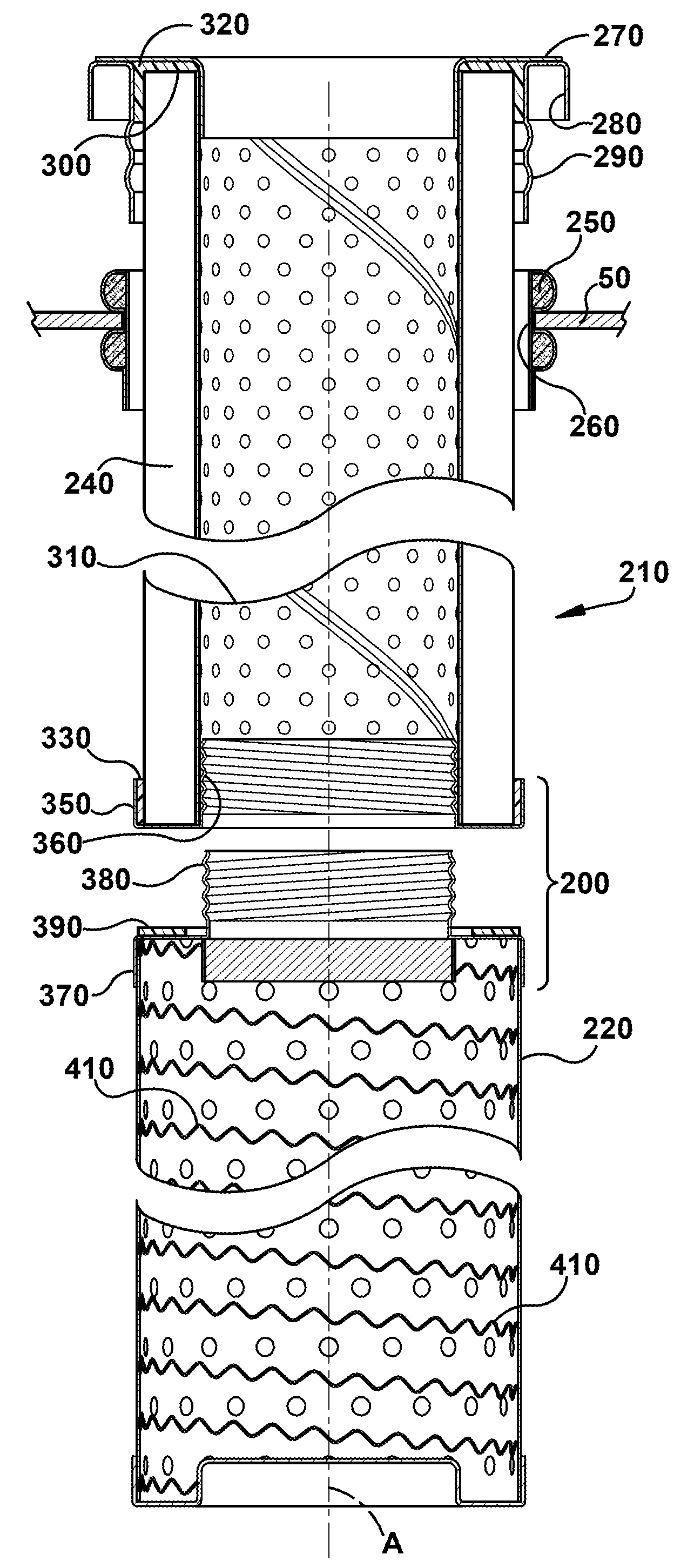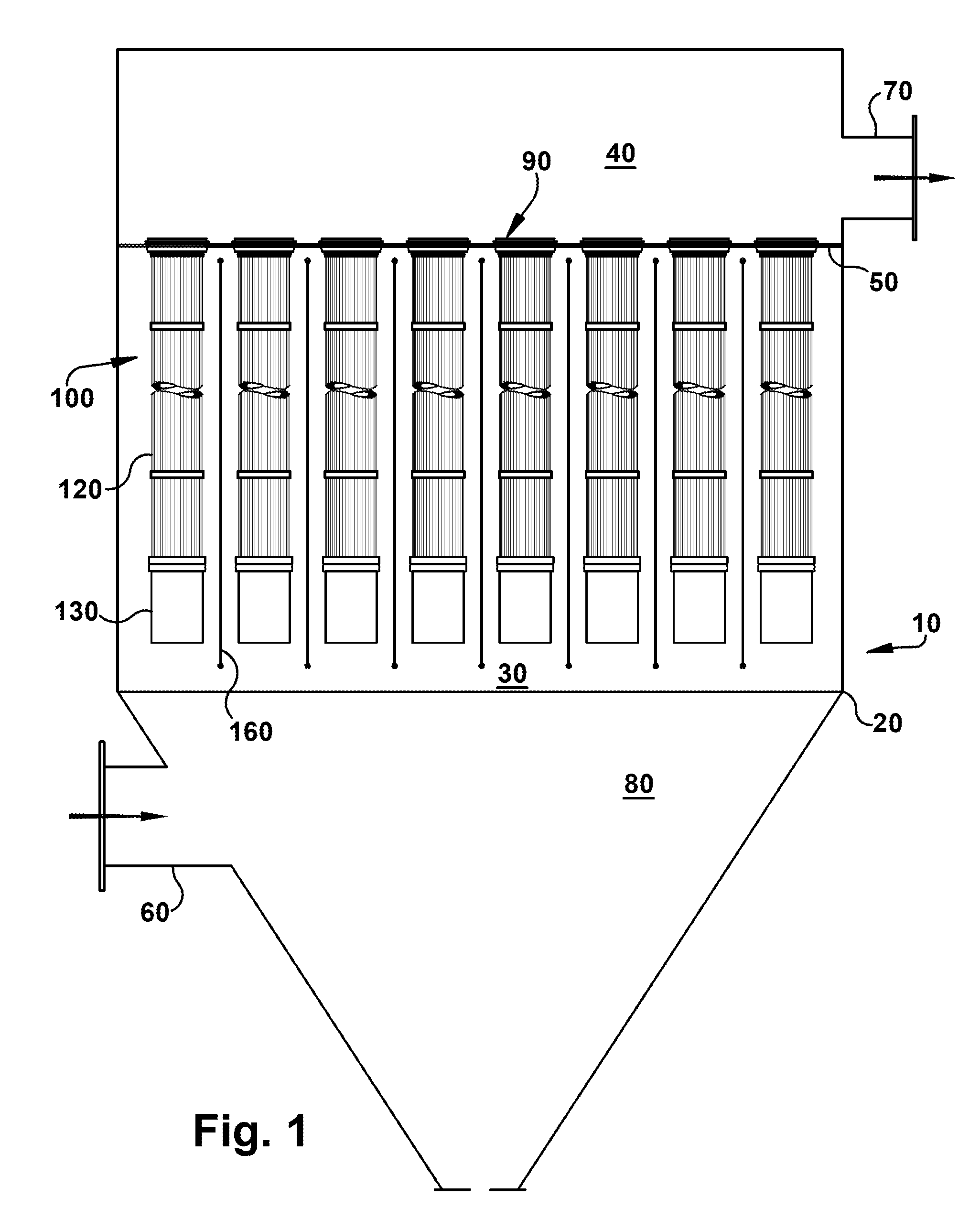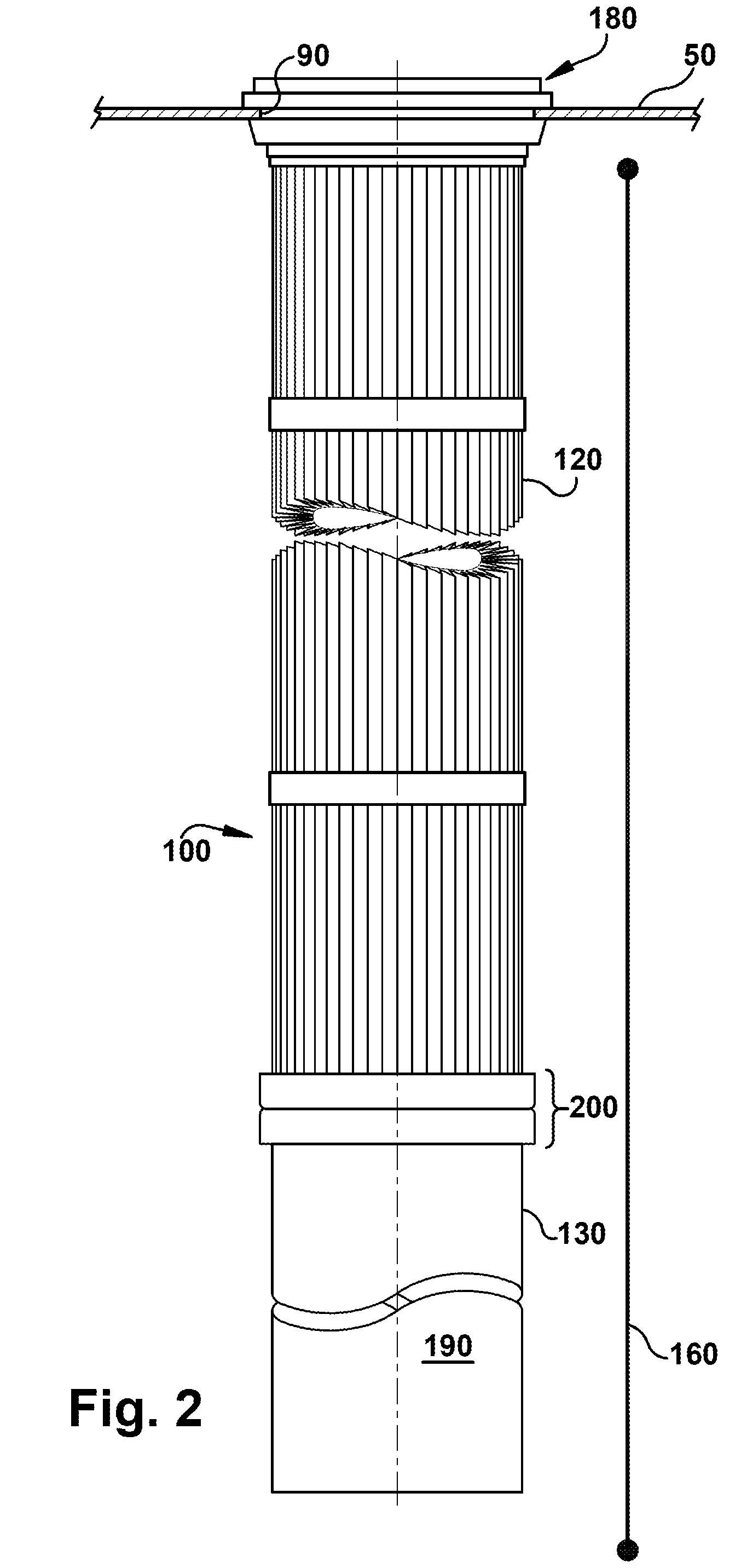Methods for operating a filtration system
a filtration system and filtration method technology, applied in the direction of electrostatic separation details, setting time indication, electric unknown time interval measurement, etc., can solve the problems of high cost of filter replacement, high cost of pac injection, and difficulty in achieving adequate exit levels of mercury per current regulatory standards, so as to reduce the reduce the effect of sorbent injection rate setting
- Summary
- Abstract
- Description
- Claims
- Application Information
AI Technical Summary
Benefits of technology
Problems solved by technology
Method used
Image
Examples
Embodiment Construction
[0032]Referring now to the figures, where the various numbers represent like parts throughout the several views, FIG. 1 is a schematic view, partly in section, of a filtration system in which exemplary embodiments of the present invention may operate. The filtration system 10 generally may include an enclosed housing 20 and a plurality of filter assemblies 100. Each filter assembly 100 may include a filter element 120 and a pre-collector body component 130 extending below and attached to the filter element 120. The system 10 also may include a pre-collector discharge electrode 160. Dirty gas may enter the housing 20 and clean gas may leave. More specifically, the dirty gas may pass adjacent to the pre-collector body components 130 and discharge electrodes 160, which may operate to remove at least a portion of the particulate matter in the dirty gas. Thereafter, the gas may pass through the filter elements 120 where additional particulate matter may be removed. Because of the operati...
PUM
| Property | Measurement | Unit |
|---|---|---|
| voltage potential | aaaaa | aaaaa |
| pressure drop | aaaaa | aaaaa |
| current density | aaaaa | aaaaa |
Abstract
Description
Claims
Application Information
 Login to View More
Login to View More - R&D
- Intellectual Property
- Life Sciences
- Materials
- Tech Scout
- Unparalleled Data Quality
- Higher Quality Content
- 60% Fewer Hallucinations
Browse by: Latest US Patents, China's latest patents, Technical Efficacy Thesaurus, Application Domain, Technology Topic, Popular Technical Reports.
© 2025 PatSnap. All rights reserved.Legal|Privacy policy|Modern Slavery Act Transparency Statement|Sitemap|About US| Contact US: help@patsnap.com



